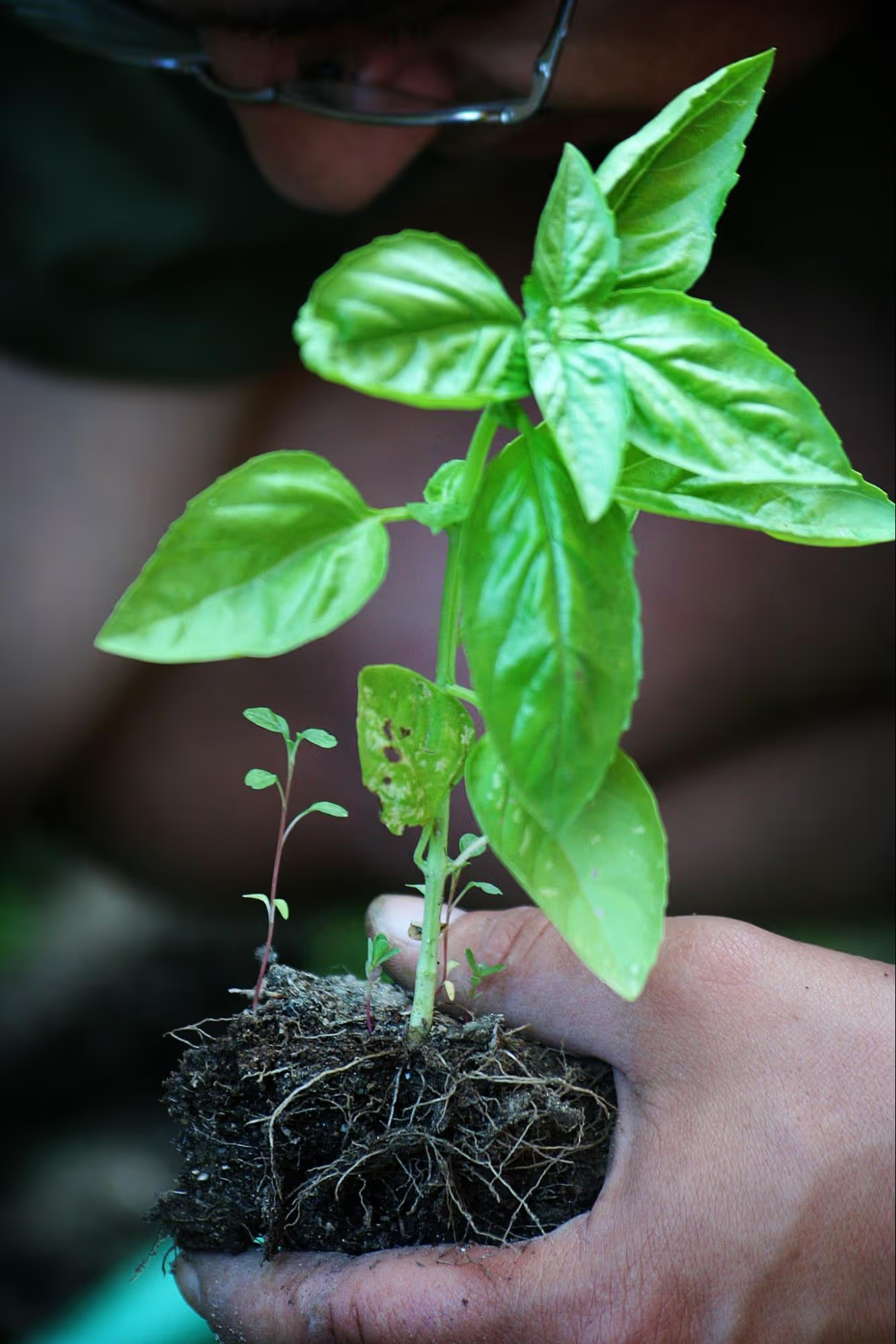
The roots of Thai basil are essential for its healthy growth and well-being, as they are responsible for absorbing the water and nutrients that the plant uses for development. While the leaves of this plant are the most well-known due to their characteristic smell and flavor, a healthy root system is the foundation that allows the plant to survive and thrive. Without an adequate root system, the plant cannot absorb the necessary resources, which can slow its growth and affect the quality of its leaves. Therefore, it is important to pay attention to the health of the roots to ensure the plant can progress and provide the best results.
The color of the roots is a key indicator of the plant's health. Healthy Thai basil roots should be light, white to light brown, which indicates that the roots are young, healthy, and effectively performing their function of absorbing water and nutrients from the soil. Roots with a light color signal good access to light, moisture, and nutrients, meaning that the root system is well-developed and functional. On the other hand, dark, black roots or roots showing signs of rot may indicate serious issues. Root rot typically occurs due to excessive moisture or poor drainage in the soil, which fosters the growth of fungi or bacteria that damage the root system. In such cases, the plant becomes stressed and may struggle to absorb water and nutrients.
The length and density of the roots are important factors that influence the plant's health. Thai basil roots should be long, but not overly dense. Long roots allow for better absorption of water and nutrients from a wider area of soil, with the roots usually developing in different directions, allowing the plant to spread and find the necessary resources for growth. However, an overly dense and highly branched root system may indicate potential problems. If the roots are excessively developed, it may be a sign that the plant was not properly repotted or that there has been congestion in the root zone. This can make it difficult for the plant to absorb food and water because the compacted roots may be blocked, reducing the efficiency of absorption. Additionally, excessive root density may interfere with the plant's stability in the soil, leading to reduced stem strength and slower growth. Furthermore, the presence of twisted or shriveled roots may indicate a lack of water or nutrients, which can negatively impact the overall development of the plant.
The roots are responsible for absorbing water and nutrients that the plant needs to grow and stay healthy. If the root system is underdeveloped or damaged, the plant may have difficulty maintaining adequate hydration and nutrient levels. In such cases, the plant may show symptoms of stress, such as yellowing leaves, slower growth, and reduced disease resistance. To ensure optimal functioning of the Thai basil roots, it is important to provide sufficient space for growth and use well-drained soil. Soil that is too moist or compacted can lead to root rot, while insufficiently moist soil can limit water absorption. Therefore, it is crucial to monitor soil moisture and ensure the right conditions for the healthy development of the root system.
Caring for the roots of Thai basil requires several key steps to ensure the plant remains healthy and well-developed:
Caring for the roots of Thai basil is crucial for its healthy growth and development. The roots are responsible for absorbing essential resources, including water and nutrients, which directly affect the plant’s health. A healthy root system allows the plant to grow in optimal conditions, while damage or inadequate conditions for root growth can lead to stress and reduced plant quality. By carefully selecting soil, ensuring proper watering, repotting, and managing temperature conditions, it is possible to provide Thai basil with a healthy root system that will enable optimal growth and development. Maintaining healthy roots is the key to obtaining quality leaves and ensuring the long-term productivity of the plant.